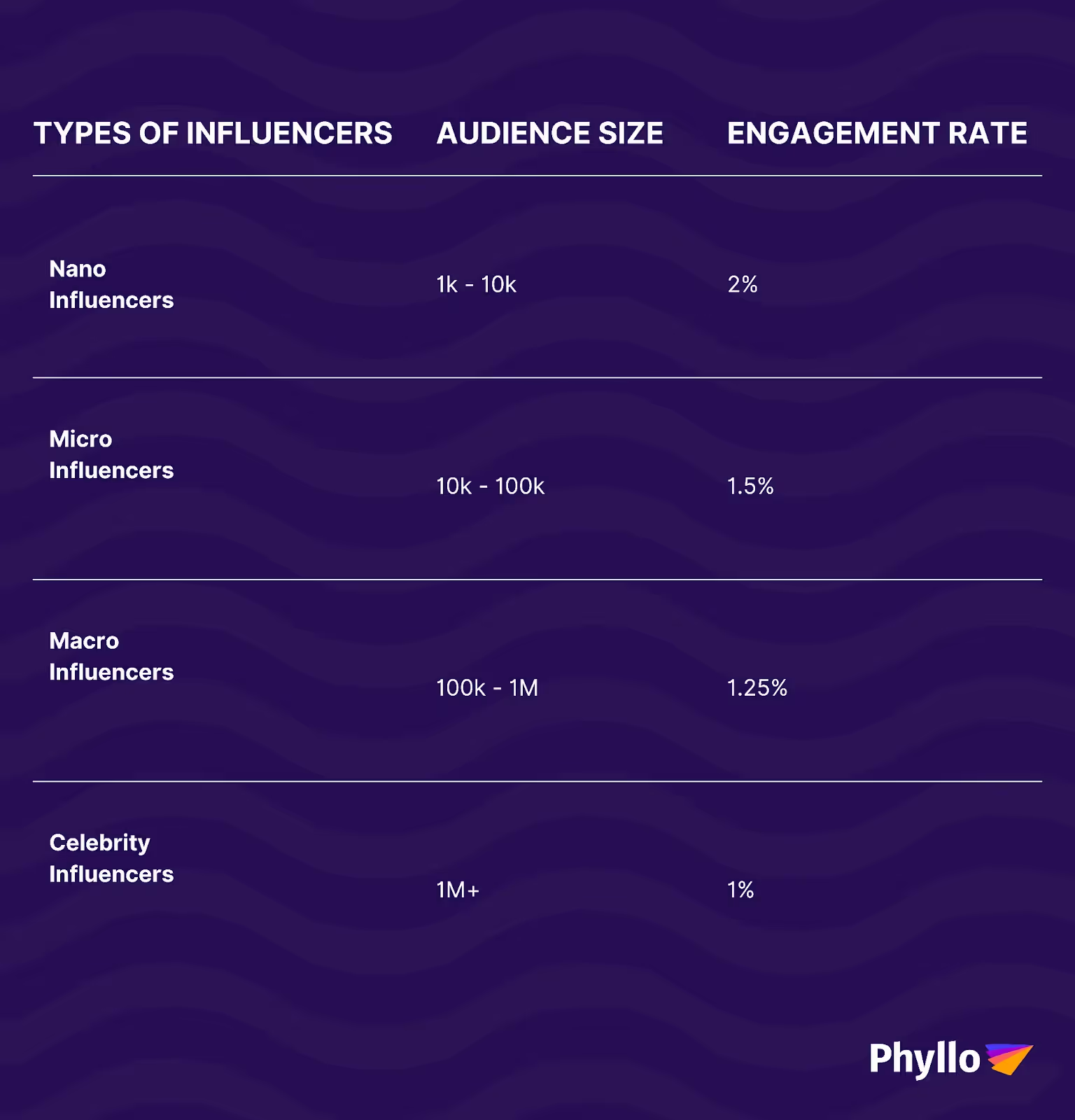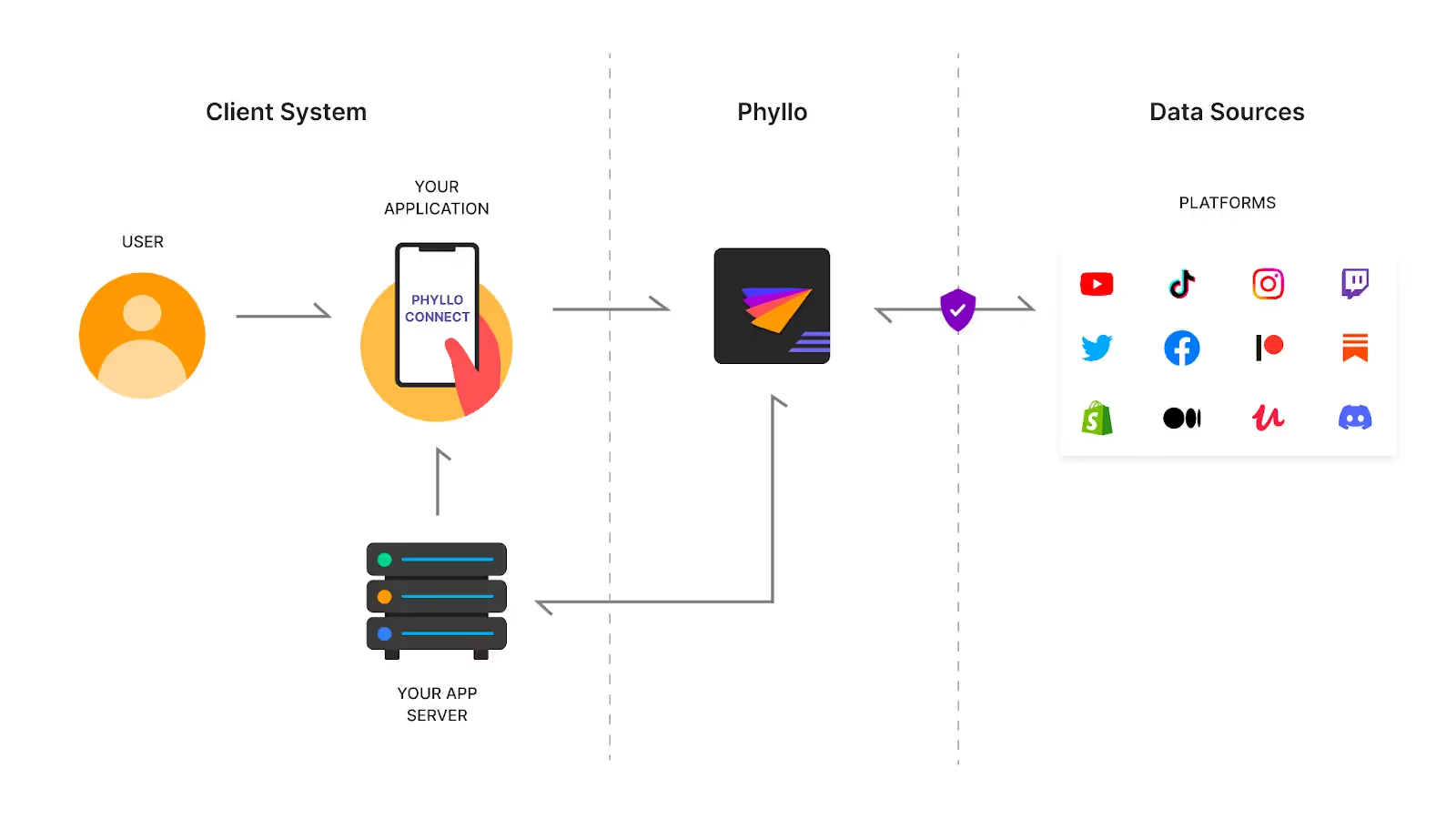Influencer marketing has grown by leaps and bounds over the past years.
And with more and more brands trying to incorporate influencer marketing in their marketing strategies, we’ve seen the evolution of influencer marketing platforms.
Today, there are hundreds of influencer marketing platforms brands can choose from. The number of influencer marketing platforms has grown exponentially since 2016. This makes competition very tight in the industry.
As an influencer marketing platform that wants to stay relevant and remain in the business making big bucks, you need to know what lies ahead — both from a technological standpoint and the marketing landscape. This includes everything from influencer discovery to influencer relationship management to crafting the best marketing strategies to campaign management tools.
Influencer marketing the future of marketing
According to studies on social media networks, social media users frequently trust influencers as much as or more than their peers regarding product recommendations. In contrast, a brand's own promotion was much less likely to result in a purchase.
Many people were concerned that sponsored posts on Instagram, made possible by government regulations requiring influencers to disclose when they were paid to promote a product, may change consumer behavior. If they were being paid to promote a product, social media influencers couldn't portray it as something they had spontaneously tried and enjoyed.
But according to recent studies, even when the recommendations of the influencers were marked as "sponsored" or "commercial," consumers were still likely to believe them. Compare this to the fact most users would be running to hit the close button on an in-app ad or hit the skip button on a YouTube ad, and we can see how influencer marketing may be the future of marketing.
Who is an influencer

Creators with a sizable following on social media sites like Instagram, Facebook, Twitter, YouTube, and others are known as influencers.
The UK's Advertising Standards Authority (ASA) claims that an influencer need not have a minimum number of followers. The ASA would classify someone as an influencer if a brand compensated them to promote a good or a service.
Social media influencers, as opposed to traditional celebrities like actors, athletes, or singers, owe much of their fame to their content.
Types of Influencers
There are four main types of influencers, and they each have their unique qualities. They include nano, micro, macro, and celebrity influencers. Let's take a look at what each one means -

How can influencer marketing platforms for creators find and manage influencers effectively
1. Create an influencer database for fruitful brand collaborations
What is an influencer database?
An influencer database is a catalog of creators that allows you to match brands with their ideal creators without trawling through multiple unorganized and unsynced databases. This makes influencer discovery and pairing a much more seamless process.
There are several metrics that will matter for influencer marketing platforms. These include -
- Identity metrics - This includes the number of followers or subscribers on social media platforms (Facebook, Instagram, YouTube, etc.)
- Engagement metrics - This includes audience engagement rate (views, likes, comments, etc.), audience retention rate, creator retention and churn, etc.
- Audience and community metrics - This includes country distribution, city distribution, age distribution, gender distribution, etc.
- Growth metrics - It is important to analyze the monetization potential of an influencer.
How to create an influencer database?
1. Collect and record creators' information
Create a comprehensive digital repository of all influencers you’ve worked with in the past, are conversing with, and potential influencers you would want to partner with in the future. This list needs to be updated periodically so you can stay up-to-date.
Usually, these databases contain creator data like -
- Social media handles
- Contact information
- Industry
- Interests
- Follower count and engagement rate
- Price per post
- Active platforms
- Content type
- Location and audience demographics
Read more: The Importance of Influencer Data: Value for Marketing
2. Appropriately tag influencers
You can set labels to mark different stages of your influencer partnerships -
- Prospects: You have yet to contact such influencers but want to collaborate.
- Contacted: You have already communicated with them.
- Interested: These are the influencers who have responded to your pitches.
- Ghosted: You have tried contacting them but had no response, or they have stopped responding.
For the influencers you have already worked with, you can further categorize them as follows -
- Active or Collaboration in Progress
- Inactive or Worked Before
- Brand Ambassador
3. Launch a formal influencer program
You can launch a strategic influencer marketing campaign explicitly developed to find the best influencers with significant industry presence.
Read more: How to create an influencer database
2. Conduct thorough influencer verification

Verifying influencers can make or destroy your influencer marketing platform. You need to evaluate influencers otherwise, your marketing strategies can backfire on a brand without the right due research.
With thorough influencer verification, your influencer marketing platform can -
- Build better relationships between brands and influencers
- Build better marketing strategies
- Predict returns better when working with concrete credibility data
- Save yourself from legal actions in the future
This is just the tip of the iceberg. Read more about influencer verification, its importance for influencer marketing platforms and how to evaluate influencers here.
However, assessing influencer credibility comes with its own set of challenges -
- Collecting and analyzing data is resource intensive
- Most data sources and platforms don’t deliver authentic data
- Fake influencers fake numbers easily
- It’s challenging to define credibility metrics for influencers
- Influencers and influencer platforms are constantly and rapidly evolving
3. Set clear goals and expectations
You want to ensure that everyone knows what they're supposed to be doing, when they're supposed to be doing it, and why.
You must also communicate these expectations clearly and effectively so that your influencers will understand them.
Also read: How To Create A Comprehensive Influencer Marketing Strategy
4. Continuously track followers and engagement

Keep track of your influencers' follower count, likes, comments, and shares on social media. You may even want to include the number of times they've been featured in the news. This will give you a good idea of their influence and help you decide who might be worth contacting for collaboration opportunities.
5. Keep an eye on influencer marketing ROI
An influencer marketing campaign is only as good as the data it generates, so keeping track of all your metrics is essential. This will help you understand what campaigns work best for your clients, which influencers produce the best results, and how much money you spend on influencer marketing.
Read more on why is influencer marketing ROI important for your influencer marketing platform here.
Also, remember that influencer marketing platforms need metrics other than the ROI of influencer campaigns to get better results. These include -
To drive sales:
- Cost per action or CPA
- Total conversions
- Total revenue
For brand awareness:
- Reach and impressions
- Traffic to the website
For improving brand sentiment and loyalty:
- Engagement metrics
You may even want to consider setting up a dashboard for your influencer campaigns that track all of this information in one place so you can keep an eye on things from afar.
Important KPIs to understand influencer analytics
1. Brand awareness
- Followers
- Impressions
- Hashtags
2. Tracking conversion
- Use trackable links
- Track conversion with affiliate links
3. Measure your content performance
- Track total engagement
- Understand engagement rate
4. Track your web traffic
Also read: Influencer Marketing ROI - Measuring the Impact of Your Campaigns
6. Keep an open line of communication
It's important to always keep an open line of communication with your influencers, especially if you plan on working with them in the future.
You want to make sure they're happy with their experience working with you, and if they have any complaints or concerns, they'll be more likely to quit if they know they can talk with you about them! The idea is to build an effective influencer network that trusts your platform.
This means regularly checking in with your influencer and ensuring they feel like they are getting what they need from the partnership and that you're getting what you need from them. If you have any questions, concerns, or issues that come up during the influencer campaign, be sure to bring them up early and often so that you can work through any problems as soon as possible.
7. Respect each influencer’s process
Managing influencers can become a task.
However, you don't just want to get your influencers on board without understanding what their process is because that's how you end up with a lot of "fake" influencers that aren't going to drive results for your clients.
Instead, figure out how each influencer works—what they need from you and when, their goals for the influencer campaigns, and what kind of feedback they'd like to receive from you.
Find out how much time they'll need to get the job done and when they're available, then make sure you respect that timeline. You want to give them enough time to do their job well but not so much that they lose interest in what they're doing or get bored with the project.
8. Stay on top of legal requirements
Staying on top of the legal requirements governing your influencer marketing activities is important. Not only do these rules vary by country, but they also change frequently as new laws are passed, and old ones are updated.
You should ensure you have someone in your organization who knows your country's legal landscape and can watch for changes that might affect your program.
Read more about why effective influencer management can contribute to your overall influencer marketing efforts here.
Critical challenges for influencer marketing platforms going forward
Influencer marketing is a growing industry, with more and more brands looking to engage with the right influencers to market their products.
However, this doesn't mean that the market is without its challenges. Here are ten critical challenges an influencer marketing platform may face going forward -
1. Rapid growth
Influencer marketing has seen an explosion in popularity over the past few years—and for a good reason. The power of collaboration and authenticity is hard to beat, and it's a massive part of what makes influencer marketing so appealing to brands and audiences alike.
This rapid growth also means rapid changes.
As a result, you must ensure that your influencer marketing platform keeps up with these changes staying on top of your game and offering all the necessary (trending) features to support large and small campaigns. These could include features like search and discovery, ROI analysis, campaign management, etc.
2. Access to reliable influencer marketing data and insights
Reliable influencer marketing insights can help your influencer marketing platform in the following ways -
- Identify the right influencers to pair with brands
- Campaign planning
- Improve engagement rates
- Better influencer payouts, etc.
However, because there aren't any industry-wide data standards, marketers frequently have trouble obtaining useful creator data from various platforms.
This creates issues like -
- Verifying the creator’s identity
- Providing authentic data to brands
- Third-party data agencies and data scrappers have repeatedly failed influencer marketing platforms
Read more about the data challenges influencer marketing platforms may face here.
Furthermore, there’s also the never-ending debate on which is better - authenticated data or public data.
3. Finding the right influencers for a campaign
Influencer marketing platforms must include a sophisticated influencer search and discovery system to pair companies with the right influencers that share similar values and target audiences.
4. Fraud detection
It's crucial to be sure that one isn't investing in phony accounts and bots, given how much money is spent on this kind of advertising.
Brands are finding it more and more challenging to determine whether an influencer has a real following. Today, it is very easy to buy fake followers. So marketers can be easily tricked into collaborating with "influencers" who don't actually have an audience or, even worse, those who are being paid to promote competitors' products!
Read more: The Epidemic of Fake Influencers and their Fake Followers
5. Measuring the effectiveness of influencer marketing campaigns
Measuring the effectiveness of influencer marketing campaigns is tricky—it's hard to quantify how much an influencer's post boosted sales, for example. This can make it challenging for brands to determine the ROI of their influencer marketing efforts.
But as an influencer marketing platform, it's important to keep track of your metrics to refine your influencer marketing strategy over time and make more informed decisions about what campaigns work best.
6. Dealing with constant social media platforms and their algorithm changes
Some social media platforms like Instagram have been known to change their algorithms without warning or notice, which can significantly impact an influencer's ability to reach followers. In addition, some platforms have placed restrictions on certain types of content, making it difficult for influencers to post what they want when they want.
Influencer marketing platforms must be able to quickly and effectively respond to algorithm changes to ensure that influencer partnerships are optimized, and campaigns are as effective as possible.
7. Adhering to influencer marketing regulatory requirements
As the influencer marketing industry matures, platforms must clearly understand the different regulations.
However, since it’s still a relatively new domain, many platforms operate in a regulatory gray area, with unclear guidelines and rules governing how influencers and brands engage with one another.
And due to this, we now see newer regulations, rules, and laws being passed for influencer marketing almost daily.
Also, different countries have various protocols.
To address this issue, influencer marketing platforms must rigorously monitor and enforce adherence to pertinent laws and regulations.
8. Advertiser accessibility
Brands are beginning to demand more control over their campaigns - particularly when screening influencers and ensuring they generate a return on the customers' advertising budget.
Influencer marketing platforms must be more open about how precisely they select their influencers, how much they pay them, and how those payments are allocated. In-depth procedures on brand safety and avoiding affiliation with questionable influencers will also be required.
Read more about the challenges influencer marketing platforms could face here.
Also read: The Future of Influencer Marketing: Predictions and Trends
Influencer marketing platforms need a scalable, flexible, and reliable core technology
The truth is you can’t become the best influencer marketing platform if you can't make informed decisions. And you can't make informed decisions without good data. Furthermore, you can’t get good data without a good data infrastructure!
That’s where Phyllo comes in.

Phyllo understands influencer marketing needs and is here to help you make influencer marketing easier, more accessible, and more transparent.
Here are some of the key features that we offer -
- Connect: The core SDK product enables creators to connect to different work platform accounts with Phyllo.
- Identity: This Phyllo product is used to access the creators' profile information.
- Audience: It is a sub-product of Phyllo under an identity that gets access to creators' audience demographics information.
- Engagement: This product gives you access to the creator's content information, including actual content, URL, number of likes, comments, shares, etc.
- Income: It gives access to creators' income information.
- Publish: This Phyllo product lets you publish content on an influencer account, including images, videos, texts, and a combination.

Schedule a call to learn more about how Phyllo can empower your influencer marketing business.
Want to test the waters before you go ahead? Sign up for a free account to access influencer marketing data with Phyllo APIs.

.avif)







